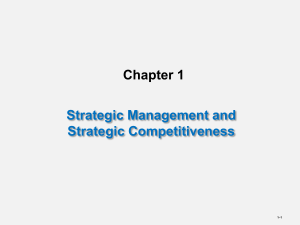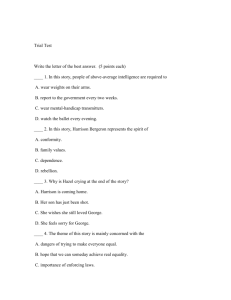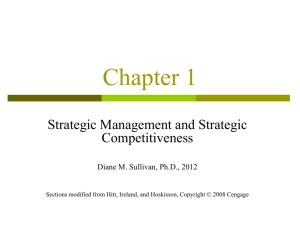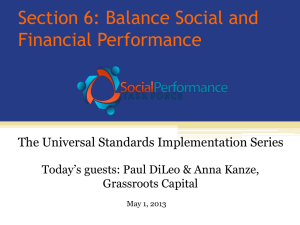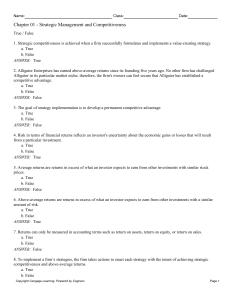111
advertisement
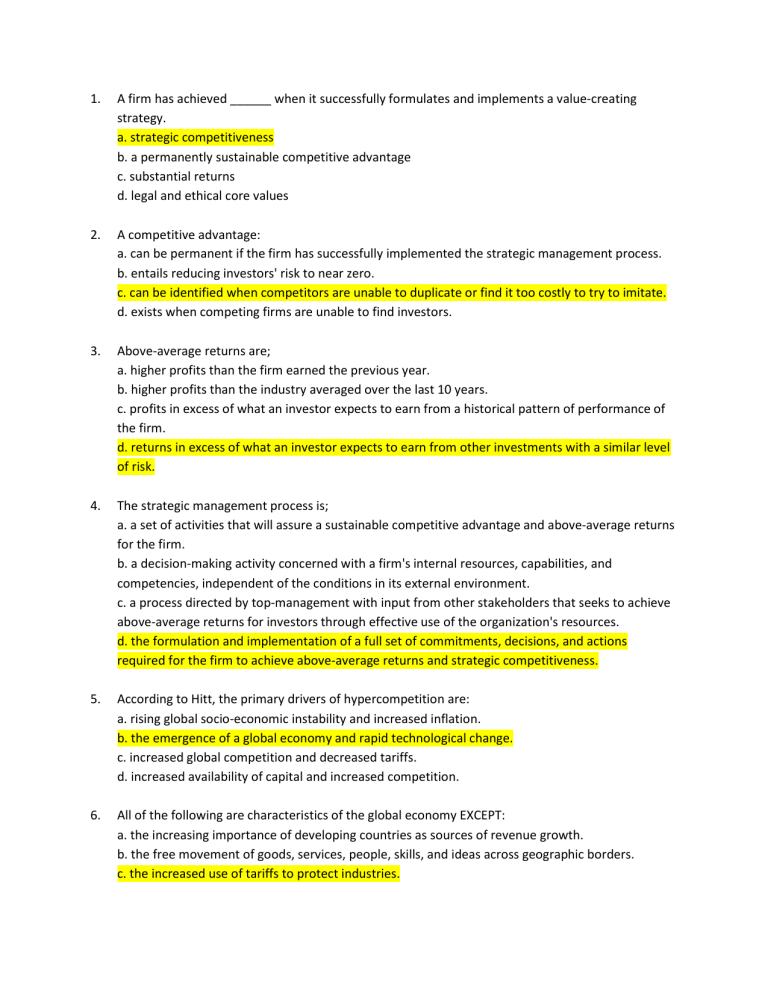
1. A firm has achieved ______ when it successfully formulates and implements a value-creating strategy. a. strategic competitiveness b. a permanently sustainable competitive advantage c. substantial returns d. legal and ethical core values 2. A competitive advantage: a. can be permanent if the firm has successfully implemented the strategic management process. b. entails reducing investors' risk to near zero. c. can be identified when competitors are unable to duplicate or find it too costly to try to imitate. d. exists when competing firms are unable to find investors. 3. Above-average returns are; a. higher profits than the firm earned the previous year. b. higher profits than the industry averaged over the last 10 years. c. profits in excess of what an investor expects to earn from a historical pattern of performance of the firm. d. returns in excess of what an investor expects to earn from other investments with a similar level of risk. 4. The strategic management process is; a. a set of activities that will assure a sustainable competitive advantage and above-average returns for the firm. b. a decision-making activity concerned with a firm's internal resources, capabilities, and competencies, independent of the conditions in its external environment. c. a process directed by top-management with input from other stakeholders that seeks to achieve above-average returns for investors through effective use of the organization's resources. d. the formulation and implementation of a full set of commitments, decisions, and actions required for the firm to achieve above-average returns and strategic competitiveness. 5. According to Hitt, the primary drivers of hypercompetition are: a. rising global socio-economic instability and increased inflation. b. the emergence of a global economy and rapid technological change. c. increased global competition and decreased tariffs. d. increased availability of capital and increased competition. 6. All of the following are characteristics of the global economy EXCEPT: a. the increasing importance of developing countries as sources of revenue growth. b. the free movement of goods, services, people, skills, and ideas across geographic borders. c. the increased use of tariffs to protect industries.
